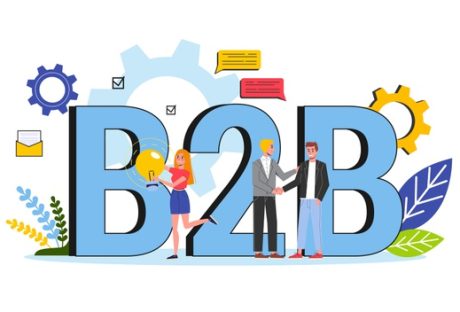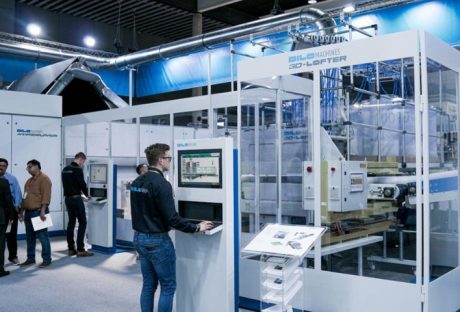When you start advertising on Airbnb or similar short-term vacation rental websites your primary objective is to turn your lodging into a stable source of income. Essentially, the success of your rental project depends on your ability to attract good, payable guests who will stay in your cozy corners, get an excellent experience, share it with other travelers on the Airbnb platform, and, ultimately, turn into your brand advocates with all the perks applicable. The snag is that not all Airbnb entrepreneurs know how to embark their venture on the path to success. In this guide, we will tell you about the pillars of a flourishing Airbnb company.
Define your mission
So you choose short-term hosting as a way to earn extra dollars for your happy living. First, you need to determine a simple mission statement. Your mission vision will shape how you operate your new-born startup and the experience you deliver to your tenants. Elaborate on a business plan and define your goals by asking yourself the following questions:
- How do you want to work?
- How much time and resources can you pour into your business?
- What is your vision of perfect hosting?
- What are your goals?
- How many deals do you need per month to meet expenditures and earn?
- How are you going to beat competitors?
- What should you do to make your listing appealing?
- What actions do you need to take to run your business smoothly and effectively?
- How will you protect your place from unruly guests?
- How will you ensure compliance with local tax legislation?
Like any business, leasing out on Airbnb will involve certain expenses and investments. You should have a pretty clear sense of all your possible disbursements and incomes to ensure your Airbnb business is simply worth it. Even if it is a single spare room in your condo that you are going to rent, it is still a business, though quite small. And the business must be legal to thrive. To exclude any problems with the Law, consider hiring a professional accountant or an accredited Airbnb management company that will help you obtain all necessary municipal permissions and secure your total compliance with all administrative codes and tax authorities as well as assist you with procuring an LLC status as your business grows.
Survey the market
Anything you can do to elevate your listing or make it unique and attractive is a chance to charge more in your market. Scrutinize real estate websites; explore what other Airbnb hosts, lodgings, and local hotels have to offer. Find out whether they use dynamic pricing to update their rates based on various factors like seasonality, upcoming events, weekends versus weekdays, etc. The initial research will help you make the right decisions.
Now think about what you can offer to make your guests happy. Is your home stuffed with all modern comforts to ensure a relaxed stay? Is your place pet-friendly? Do you have parking, a swimming pool, or a barbecue zone? Is the interior uniquely decorated? Do you provide extra little surprises for your cherished guests such as bottled water, coffee, sweets, or a free souvenir they can take as a memento? Added sophistication, delight, and comfort renders you the right to safely increase the price for your vacation rental property.
Stay sober about your expenses and profits
Tally your costs by creating a spreadsheet of expenses that can be divided into three categories:
- Upfront costs: the things you need to buy to make your spaces comfortable and beautiful before anyone experiences it including renovations, decoration elements, furniture, appliances, and photography.
- Ongoing costs. These include all items consumable by the guests that you will have to periodically replenish: toilet paper, towels, batteries, light bulbs, personal hygiene supplies, broken dishware, bedding, linen, etc.
- Management and maintenance costs. Think of the fees for outsourced cleaning, repair works, exterior and lawn upkeep if you are not going to tackle these issues on your own. Be in the loop with your numbers like utility bills, WI-FI, mortgage, and consider them when setting the price for your service.
Outsource professional management
Running an Airbnb business is a time-consuming and stressful venture, especially when you have to do everything on your own without competent assistants or the second host. You have to deal with bookings, verify guests, restock supplies, arrange cleaning between stays, and maintain everything in working condition to ensure a flawless stay. Just a hell of a work. If you are not very sure about your managerial efficiency, yet, you want your Airbnb enterprise to thrive, hiring a team of professional rental managers can be a smart move. Ask yourself whether you have time and knowledge to cope with the multiple Airbnb fuss and bother on your own, or you can outsource a dedicated and competent Airbnb manager to do all the work on your behalf to free you up and ensure a wonderful customer experience, as this is the manager’s primary job. Reckoning to a well-trained rental manager is also reasonable when you want to have a stable source of income through renting out without breaking local tax laws and housing codes, as the field experts always know how to stay law-abiding, yet, profitable. More about the services of such companies you can read on masterhost.ca.
Assess your offer from the guest’s point of view
How can you make your guests feel as welcome as possible? Have you considered all the needs your future client may have while staying within your confines?
Beginner Airbnb hosts should seriously consider investing in comfortable mattresses, sofas, and quality bedding. The first thing you appreciate in a hotel is the bed’s comfort, so make sure your guests can enjoy a comfortable stay and sleep well on your beds. Very often guests give 5 stars simply because of the great bed, which eventually translates into improved ranking in the Airbnb search results and increased occupancy rates.
Provide your guests with perfumery articles in case they forget to take them. To succeed in the Airbnb business, you should have a clear idea of the guest’s wants and wishes. Have you ever thought about why people choose the same hotel over and over again? Because they know what to expect: the feeling that no one has lived in the room before you, carefully folded towels, the smartphone chargers on the bedside table… Guests want every detail to be meticulously considered. Be attentive to the desires of your guests, and they will want to come back to you again and again.
Put it on autopilot
Hosting isn’t easy, given the heap of tasks and arrangements to struggle with. But with modern-day advancements of technology, running an Airbnb company can easily turn into a breeze as you can automate most of the repetitive, time-eating procedures and free your hands for something more important and exciting.
There are lots of powerful software solutions and cloud-based apps, either free or pretty affordable, which help to boost the efficiency of short-term vacation property through comprehensive automation of key business processes. These include guest communication, booking management, task allocation, multiple-account management, auto-pricing, guest review writing, and insightful financial reporting and performance statistics.


























